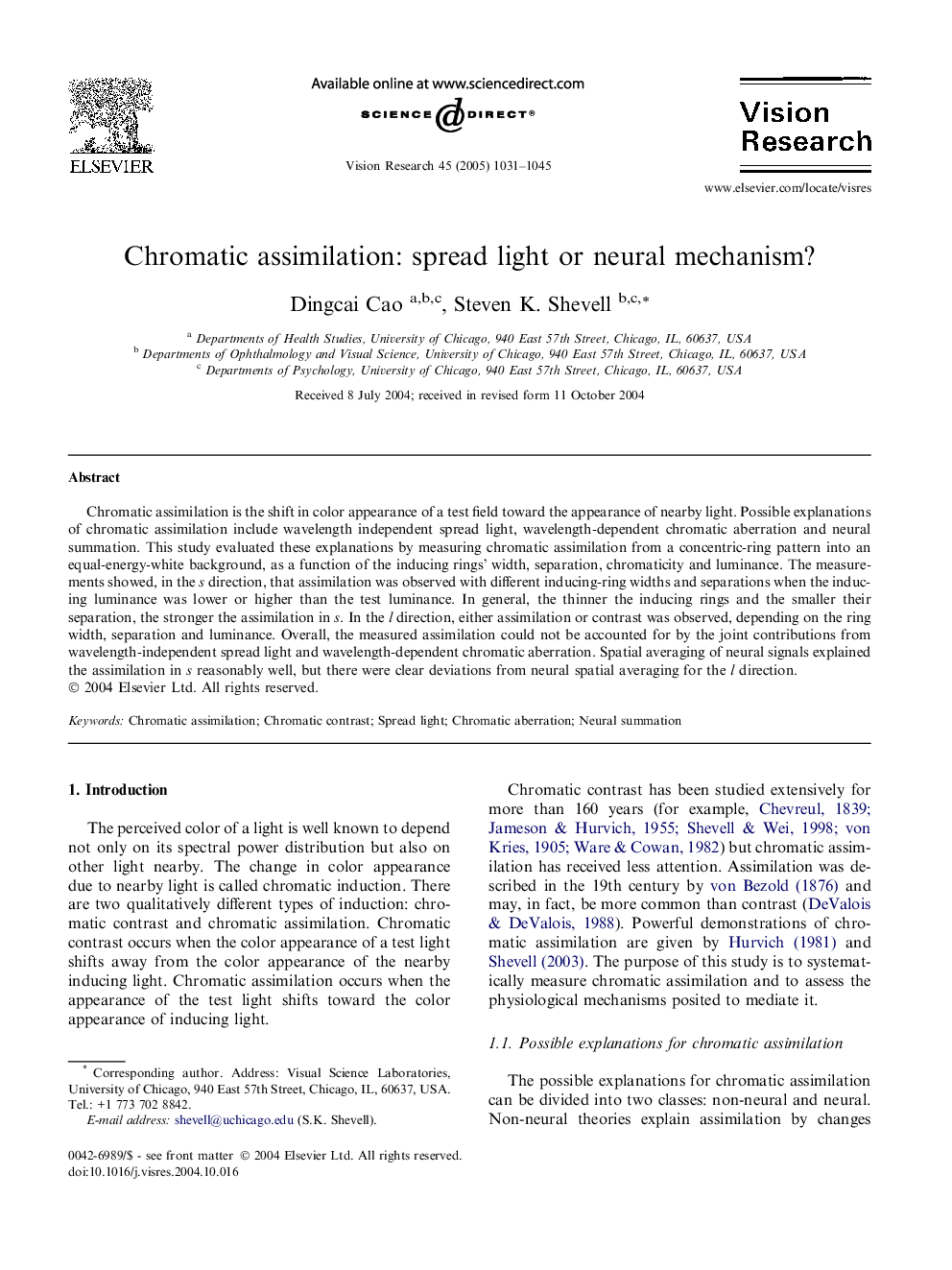| کد مقاله | کد نشریه | سال انتشار | مقاله انگلیسی | نسخه تمام متن |
|---|---|---|---|---|
| 9348551 | 1263590 | 2005 | 15 صفحه PDF | دانلود رایگان |
عنوان انگلیسی مقاله ISI
Chromatic assimilation: spread light or neural mechanism?
دانلود مقاله + سفارش ترجمه
دانلود مقاله ISI انگلیسی
رایگان برای ایرانیان
موضوعات مرتبط
علوم زیستی و بیوفناوری
علم عصب شناسی
سیستم های حسی
پیش نمایش صفحه اول مقاله

چکیده انگلیسی
Chromatic assimilation is the shift in color appearance of a test field toward the appearance of nearby light. Possible explanations of chromatic assimilation include wavelength independent spread light, wavelength-dependent chromatic aberration and neural summation. This study evaluated these explanations by measuring chromatic assimilation from a concentric-ring pattern into an equal-energy-white background, as a function of the inducing rings' width, separation, chromaticity and luminance. The measurements showed, in the s direction, that assimilation was observed with different inducing-ring widths and separations when the inducing luminance was lower or higher than the test luminance. In general, the thinner the inducing rings and the smaller their separation, the stronger the assimilation in s. In the l direction, either assimilation or contrast was observed, depending on the ring width, separation and luminance. Overall, the measured assimilation could not be accounted for by the joint contributions from wavelength-independent spread light and wavelength-dependent chromatic aberration. Spatial averaging of neural signals explained the assimilation in s reasonably well, but there were clear deviations from neural spatial averaging for the l direction.
ناشر
Database: Elsevier - ScienceDirect (ساینس دایرکت)
Journal: Vision Research - Volume 45, Issue 8, April 2005, Pages 1031-1045
Journal: Vision Research - Volume 45, Issue 8, April 2005, Pages 1031-1045
نویسندگان
Dingcai Cao, Steven K. Shevell,